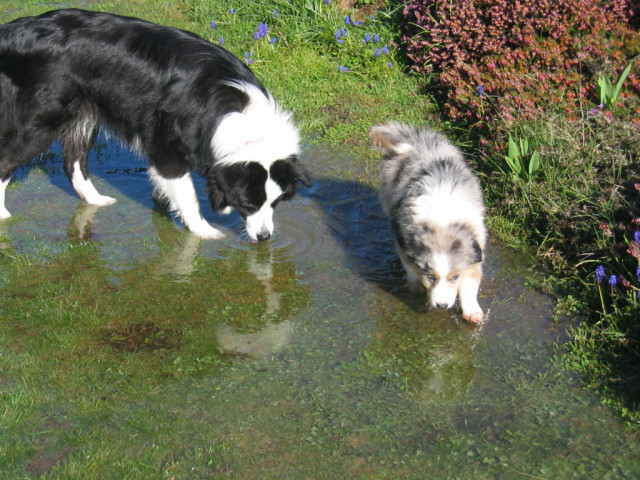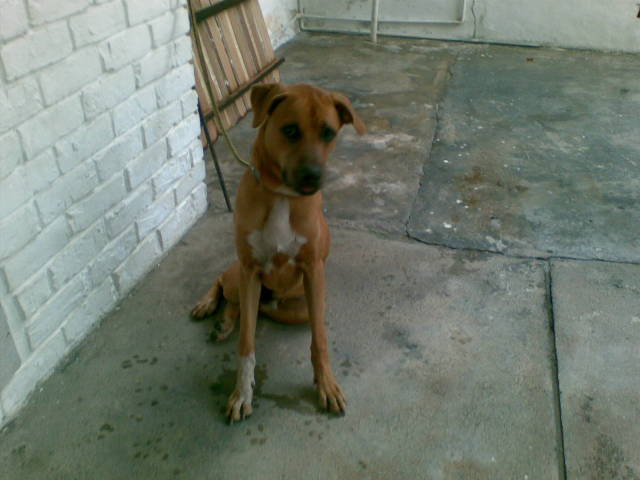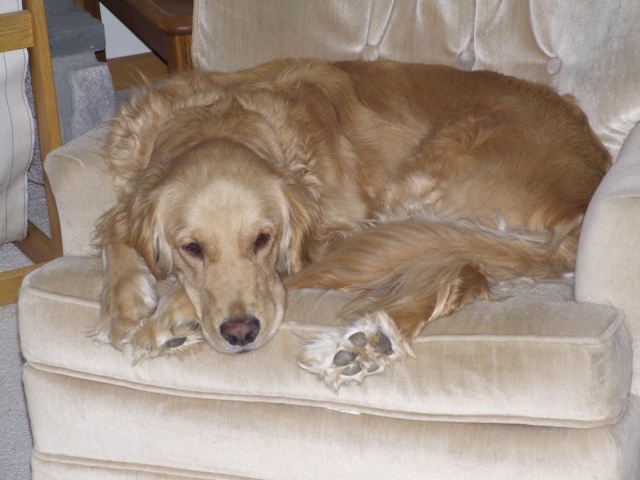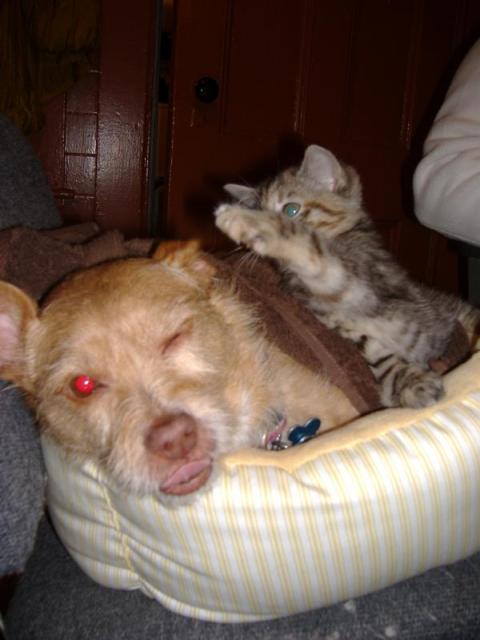QuestionHello,
I am currently owned by a 10 month old Standard Poodle, Schumann. We have attended several basic obedience classes already and I have been attempting to follow through on the principles taught. When we are at home together he is typically fairly well behaved. Despite the training, there are still some issues that I can't seem to get a handle on:
1)Barking, barking, barking! He will spend his time watching out the window and barking at passing people and cars. When we are out on leash, he will bark at neighbours and cars driving by. No amount to "time outs" seem to help. The same goes for the doorbell. He turns into this Tasmanian devil and guests are barked at, jumped on and pawed as a greeting.
2)Pulling on the leash: I have tried the treat method to get him to heel but I find that he will heel well when he wants a treat but as soon as a car that looks good to chase passes, it is more interesting and I find it impossible to get his attention. On several occasions he has almost pulled me over on walks as he lunges at people, cars, dogs. Recently I purchased a Halti harness, however he will lag way behind me and does not heel despite treats and encouragement.
3)Recently I have found that Schumann has developed an antisocial disposition towards other dogs. When he meets new dogs on the leash, he will growl, bark and jump back. He is not this way towards the dogs he is familiar with. He has never had a bad experience around another dog. The same goes for small children. When friends bring young children to my house, he is absolutely out of control! He will bark and chase them. It is exhausting and makes it difficult for people to come comfortably to my home.
I have read Cesar Milan's book and like the idea of being the pack leader but clearly I am missing the practical tips on exactly how to communicate to Schumann that I am pack leader and maintain that. I am afraid that he is going to be running our lives soon!
Thank-you, I look forward to your thoughts.
Erika (and Schumann)
AnswerThe problems you are having are very common, and can be fixed. The dog is just totally out of control and yes he is running the show.
I am not sure what sort of trainer you worked with, or what they taught you, but I don't rely on using treats in training. If you went through an obedience course, there is no reason the dog should be pulling you or barking. I would find a trainer who can teach you how to correct a dog, using a pinch collar and a leash. Then all those nuisance behaviors like unwanted barking can be corrected for, either verbally or physically. I have multiple dogs and a silent house. The way I do it with my dogs is they get one verbal warning for barking (either in the crate or in the house) and after that, no more verbal warnings, and I follow through with a physical correction. They know this because it is consistent, and they understand it. Dogs are physical creatures, from the time they were puppies and their mother reprimanded them with a nip. This is what they understand. Different dogs need different levels of corrections, and they are only reprimanded for things they already know, in a fair way.
The problem with using treats is the exact problem you are experiencing- the dog will listen when he wants the reward, but when there is something else that's worth MORE to him than the treat (like his desire to chase a dog, squirrel, sniff trees, etc) he will not listen. Dogs who are trained like that have no respect for their handler, they are simply being bribed into doing things. It's like if you were in a restaurant with your child, and could only get your child to stop running around and have a seat by giving them an ice cream sundae, instead of just because you told them to. Dogs are not children (we cannot negotiate with dogs or sit down and reason with them), but both cannot be raised properly without boundaries, or you will create a little monster. Of course dogs should be rewarded for making the right choices, but to reward is different than to bribe. Rewards come afterwards, and are usually praise, they can also be petting, favorite toys, a walk, playing, free time, a treat, etc.
His antisocial behavior towards dogs is not about the other dog, but is about the relationship between him and you. He is not dog-aggressive, but is putting on a big display show because he is on the end of a leash and because he CAN, because he gets away with it. This display could be dangerous if he does it to the wrong dog who takes it as a challenge.
Since you mentioned "pack leaders" think of what a pack leader is in the world of dogs. The pack leader controls movement of the other dogs and keeps them in line, both physically (body language, corrections like nipping) and through vocalizations. You can show this control through having the dog do down-stays. The leader has first rights on food, and they say where and when things begin AND end- your dog does not come up to you and ask or demand to be petted, YOU decide when/if you want to pet him, or if you want to ignore him. He does not demand to play, or initiate games, you do, and only after he's done some things for you (sit/down/stay) so he works for his rewards. The dog also does not sleep in the bed, because that is putting them on the level of humans, at least in their mind. This also relates to walking on the leash, as a pack leader would not be pulled around, trailing behind the dog to wherever the dog wants to go. Be calm, confident and strong, but always fair (pack leaders are not bullies).
Cesar Milan might possibly have some helpful ideas in his book on "pack leaders", but I'm not sure how easily his ideas can be applied by pet owners to their own dogs. It is much more helpful to have a trainer who is there in person, hands-on, and can apply it directly to your dog as an individual. If you were in Chicago, I would be able to show you some things hands-on, but it's difficult to explain step by step or explain physical actions in writing.

 Dog in Heat?
QuestionLily and Jorge
QUESTION: Hello,
We have
Dog in Heat?
QuestionLily and Jorge
QUESTION: Hello,
We have
 dogs behaviour
QuestionMy 8 months old Dusto
QUESTION: My puppy
dogs behaviour
QuestionMy 8 months old Dusto
QUESTION: My puppy
 aggression in aging dog
Question
Niko
I have a thirteen year old, female, Samoy
aggression in aging dog
Question
Niko
I have a thirteen year old, female, Samoy
 Post bladder surgery potty training for INDOORS!
QuestionTiki
QUESTION: Dear Dr. Connor,
My 10 ye
Post bladder surgery potty training for INDOORS!
QuestionTiki
QUESTION: Dear Dr. Connor,
My 10 ye
 My dog is shaking and hiding under my bed recently
QuestionRorrie and Pencil
QUESTION: My dog, Rorr
My dog is shaking and hiding under my bed recently
QuestionRorrie and Pencil
QUESTION: My dog, Rorr